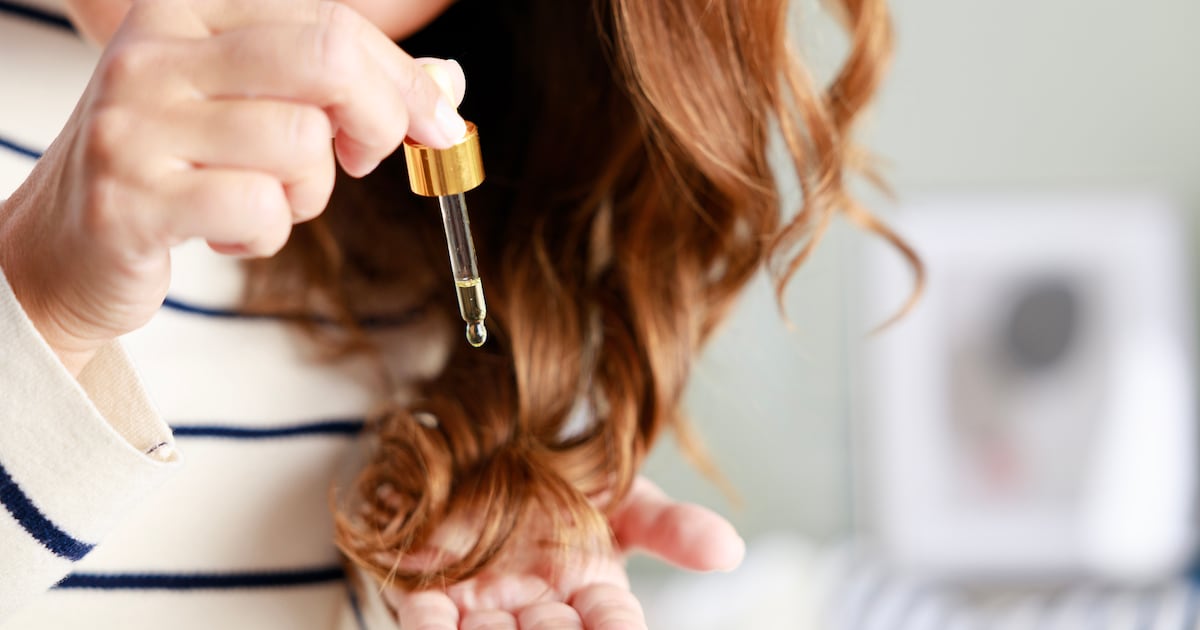A study published last month in the scientific journal Cosmetics by Brazilian researchers, utilized advanced Matrix-Assisted Laser Desorption Ionization Time-of-Flight Mass Spectrometry (MALDI–TOF MS) combined with mechanical testing, found that while oils such as coconut, avocado, and argan penetrate hair fibers, they do not uniformly improve mechanical properties in textured hair.
Understanding structural differences between different hair types
The researchers emphasized the importance of understanding the structural differences between hair types to develop more effective treatments. “Textured hair exhibits a distinct morphology characterized by waves and twists, creating areas of varying density that affect the diffusion of external molecules,” the study noted.
The study examined the penetration and impact of three vegetable oils—coconut, avocado, and argan—on both virgin and bleached textured hair. According to the authors, MALDI–TOF analysis revealed that oil molecules were present in the cortical regions of bleached textured hair, with argan oil showing the highest intensity.
However, mechanical testing showed limited improvements in hair strength.
“The tensile test results indicated that the oils were unable to modify key parameters such as Young’s modulus or break stress in textured hair, suggesting that the oils did not deeply penetrate the hair cortex to establish new molecular interactions,” the study explained.
Bleaching impacts oil absorption
The study also highlighted the damaging effects of bleaching on textured hair and how it influences oil absorption. Bleaching alters the hair’s chemical composition, increasing its hydrophilicity and reducing its natural lipid and protein content.
As noted by the study authors, this change affects how oils interact with the hair fibers.
In their analysis, the researchers found that bleached textured hair absorbed oils differently than virgin hair. “In virgin hair, the cuticle-matrix complex (CMC) remains intact, facilitating the diffusion of hydrophobic molecules like oils,” the authors stated. “However, in bleached hair, the structural changes disrupt this pathway, leading to irregular oil distribution and reduced mechanical protection.”
Notably, fatigue tests—designed to simulate daily wear and tear—showed contrasting effects between virgin and bleached hair. In virgin hair, coconut, and avocado oils improved fatigue resistance by creating a lubrication effect.
However, in bleached hair, the oils contributed to a reduction in fatigue resistance.
“Fatigue testing revealed that oils had a lubricating effect on virgin hair fibers, increasing their resistance to repeated stress,” the authors noted. “Conversely, in bleached hair, the presence of oils appeared to exacerbate fragility rather than improve it.”
Textured hair diffusion patterns differ from straight hair
A key finding of the study was the difference in oil penetration patterns between textured and straight hair types. The researchers compared their results with previous data on straight hair and found that oils diffused more uniformly in straight hair.
“Straight hair has a cortical structure that allows for more homogeneous diffusion of external molecules,” the study noted. “In contrast, textured hair’s unique cortical arrangement, featuring bilateral distribution of paracortex and orthocortex regions, creates distinct diffusion zones,” which “leads to uneven oil penetration and inconsistent mechanical effects.”
The researchers hypothesized that the irregular distribution of oils within textured hair contributes to the differences in how oils affect hair strength. The study noted that “molecules encountering the orthocortex will diffuse more readily, whereas those reaching the paracortex face greater resistance.”
As a result, the authors continued, “This variation in diffusion pathways could explain the inconsistent efficacy of oil treatments on textured hair.”
Implications for product development
The findings have significant implications for cosmetic product developers. The study underscored the need for texture-specific formulations that account for the unique structural characteristics of textured hair.
“Current product formulations often rely on data from studies on straight hair, which may not be applicable to textured hair,” the authors pointed out. “Our research demonstrates that hair type plays a crucial role in the diffusion and efficacy of cosmetic treatments.”
As such, researchers continued, “customized approaches are necessary to meet the needs of consumers with textured hair.”
The study concluded by emphasizing the importance of further research into hair structure and its impact on product performance. “Understanding the relationship between hair morphology and material diffusion is essential for creating effective treatments that address the specific challenges faced by individuals with textured hair,” the authors wrote.
Source: Cosmetics
2024, 11, 212. doi: 10.3390/cosmetics11060212
“Penetration of Vegetable Oils into Textured Hair Fibers: Integrating Molecular Matrix Assisted Laser Desorption Ioni-Zation Time-of-Flight Mass Spectroscopy (MALDI TOF/TOF MS) Analysis with Mechanical Measurements.”
Authors: Lourenço, C.B., et al.

